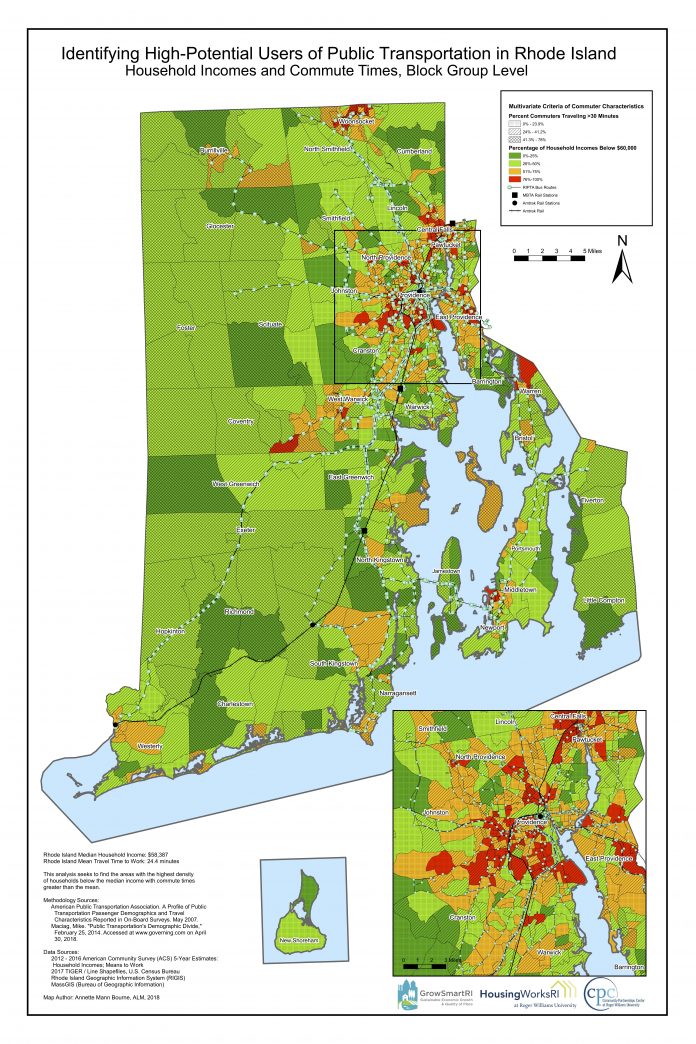
BRISTOL – Months of collaboration and partnership with Grow Smart Rhode Island and HousingWorks RI culminated in mid-May when Roger Williams University students presented geographic information system maps identifying locations within the state that are well-suited to transit-oriented development.
“From a sustainability point of view, the focus on walkability, shared modes of transportation and compact development can reduce our carbon footprint and preserve vulnerable ecological areas in Rhode Island,” said RWU assistant professor of architecture Ginette Wessel in a statement.
The three organizations have been working since January to apply such a designation to areas bordering Rhode Island’s rail corridor and high-frequency bus routes. This, the first of three stages, aims to spur housing opportunities linked to local transit.
Rhode Island communities that have expressed interest include Providence, Cranston, East Providence, South Kingstown, North Kingstown, Westerly, Woonsocket and Cumberland.
In a statement, John Flaherty, deputy director of Grow Smart Rhode Island, argued “transit-oriented development” is a win-win-win for the state.
In his remarks, he added: “It can provide a significant boost to our economy, accommodate our need for substantial new housing development and do so in a way that’s good for the environment. The business and residential market has shifted in favor of ‘walkable urban’ neighborhoods, so pursuing these opportunities plays to our strength and makes Rhode Island a more competitive place for investment.”
Throughout the semester, 18 students conducted research as part of the GIS in planning, design and conservation course. More than 40 GIS maps were displayed May 14 when the research was presented to the public.
In addition to the three nonprofits, the R.I. Division of Statewide Planning and other state agencies gave input to the research.
Emily Gowdey-Backus is a staff writer for PBN. You can follow her on Twitter @FlashGowdey or contact her via email, gowdey-backus@pbn.com.












